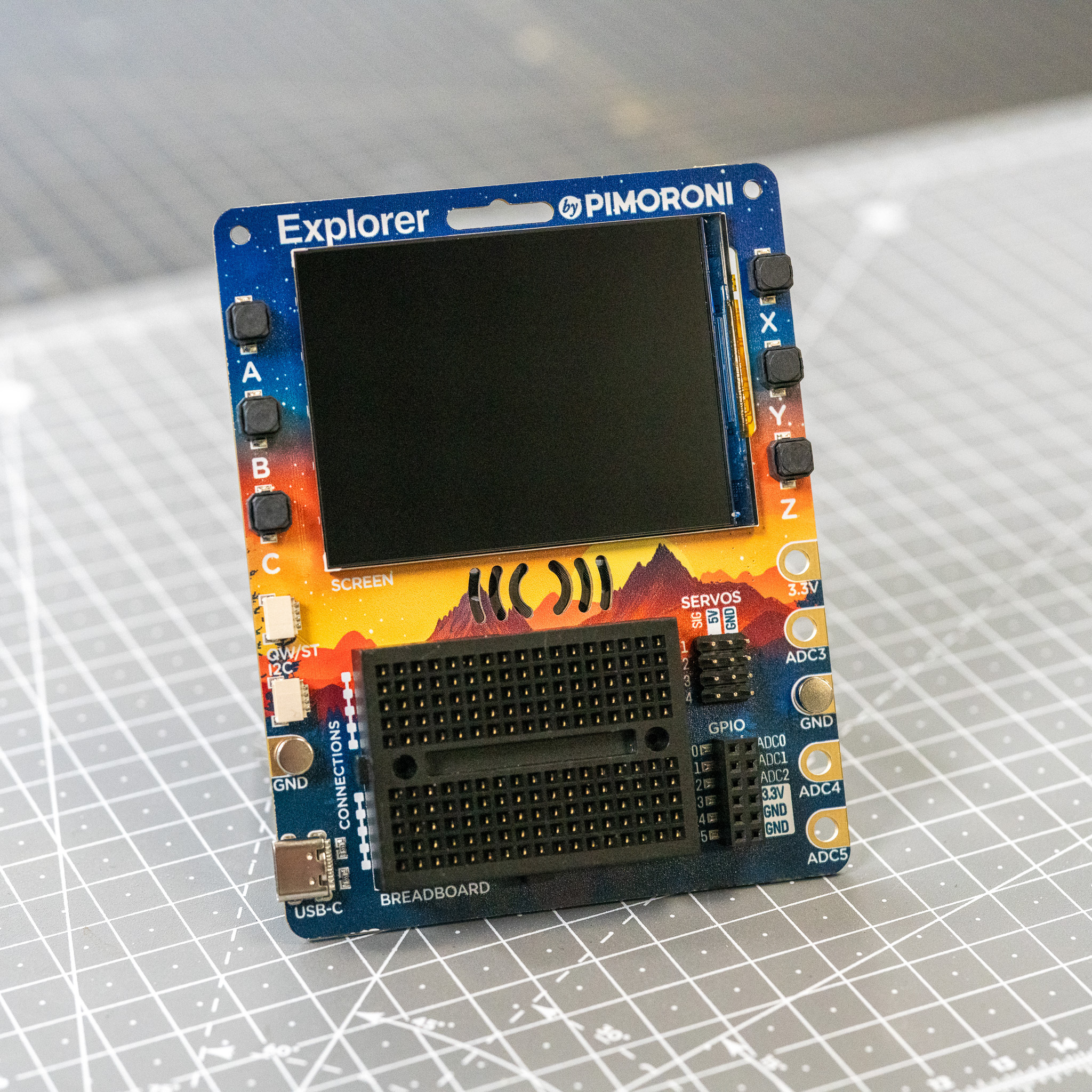Released today, the RP2350 Soc which powers theRaspberry Pi Pico 2has already been built into a plethora of products, and we’ve got a round up of the products announced, and available from today, including a conference badge.
The RP2350 offers a number of benefits over its predecessor, the popular RP2040, including faster, dual Arm Cortex-M33 cores that run at 150 MHz, an Arm TrustZone for addedsecurity, and built-in RISC0V Hazard 3 cores for low power operations.
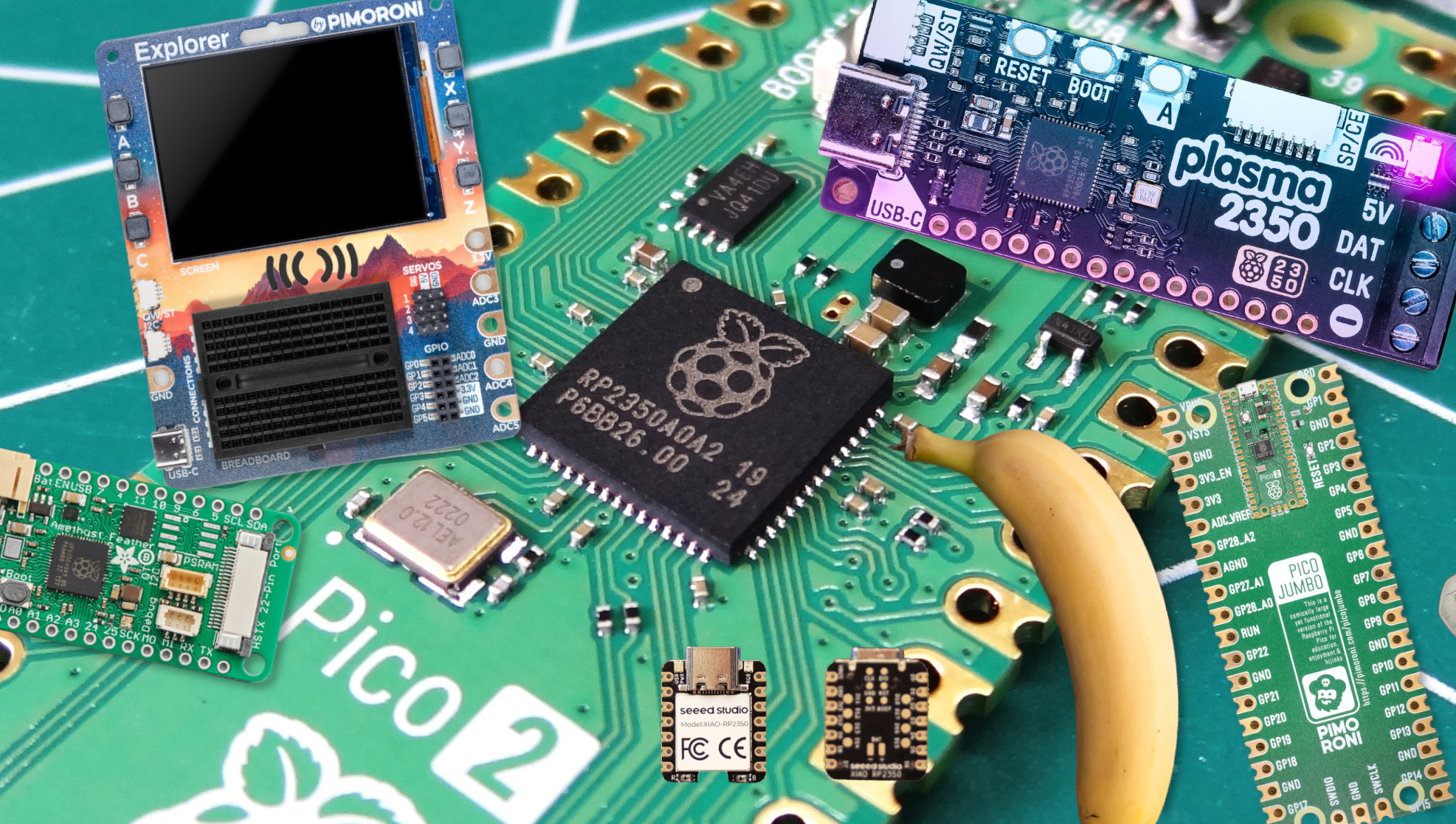
DEF CON 2024
Conference Badge
Now this is an unusual one. Over my breakfast, I read reports via X (formerly Twitter) that this year’s DEF CON badge is based around the RP2350. Raspberry Pi has confirmed that the RP2350 is indeed powering the DEF CON badges, offering a bounty of $10,000 if you may break the the signed boot process used in the RP2350’s new security features.
DEF CON, the hacking and security conference currently taking place in Las Vegas has a tradition of cool badges, and it seems that they got early access to the RP2350 in order to flash the firmware to the many thousands of badges.
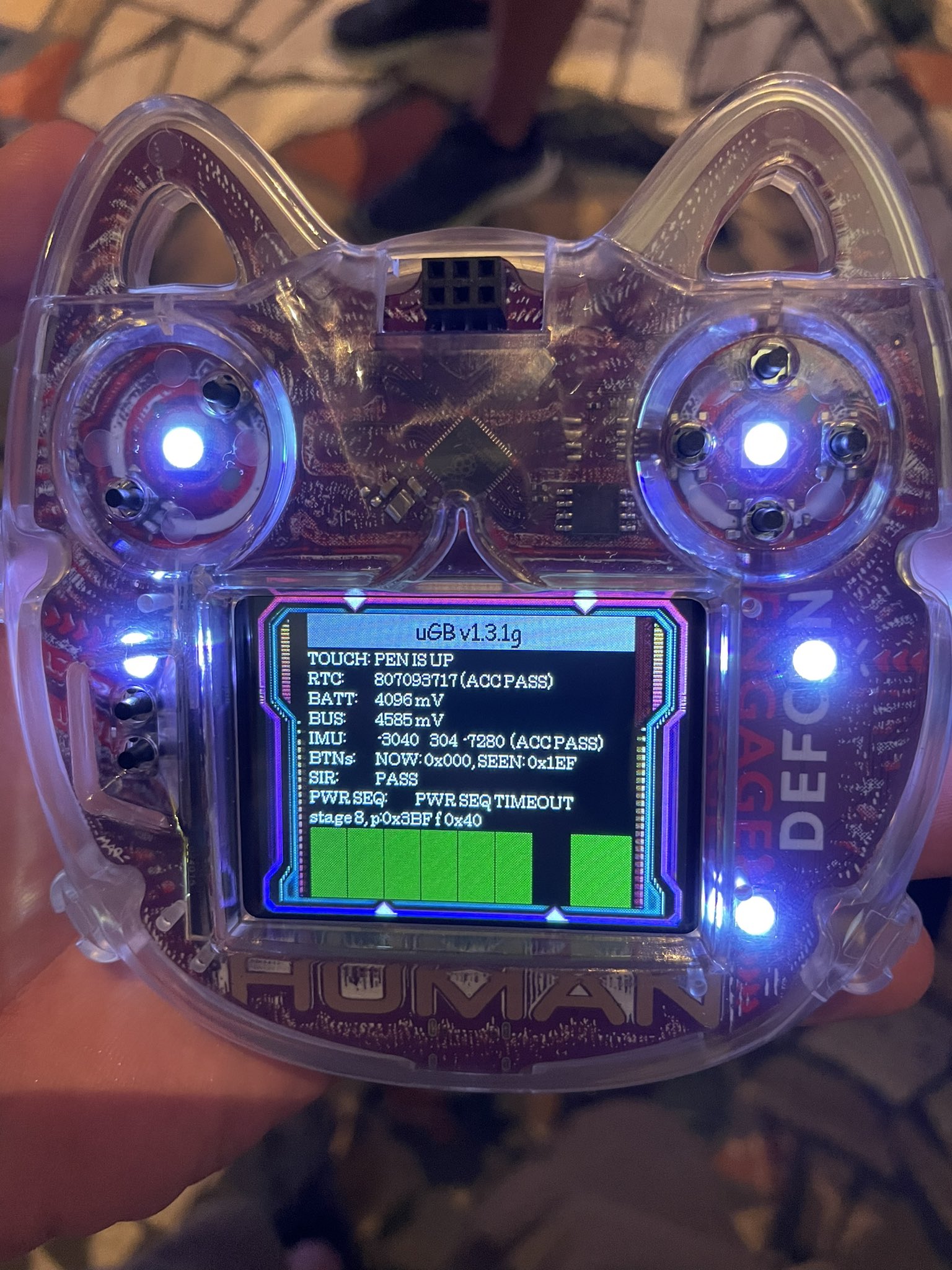
In atweet from @stranckV2we can see the RP2350 hidden beneath a plastic shell, and just above a rather lovely LCD screen.
This year’s defcon badge is furry baiting lol pic.twitter.com/cJBR72OdKnAugust 8, 2024

The RP2350 is hard to see, but with some zooming and with some enhancement we can just about make out RP2350 on the silkscreen of the SoC. Backing this up are aseries of tweetswhere users haveset their badges into bootloader mode, ready to accept a new firmware. This will show a drive, RP2350 in the file manager.
Pimoroni’s Plethora of Pico 2 Products
Pimoroni has a slew of new products based around the RP2350 and the first one on the list, is the biggest.
Get Tom’s Hardware’s best news and in-depth reviews, straight to your inbox.
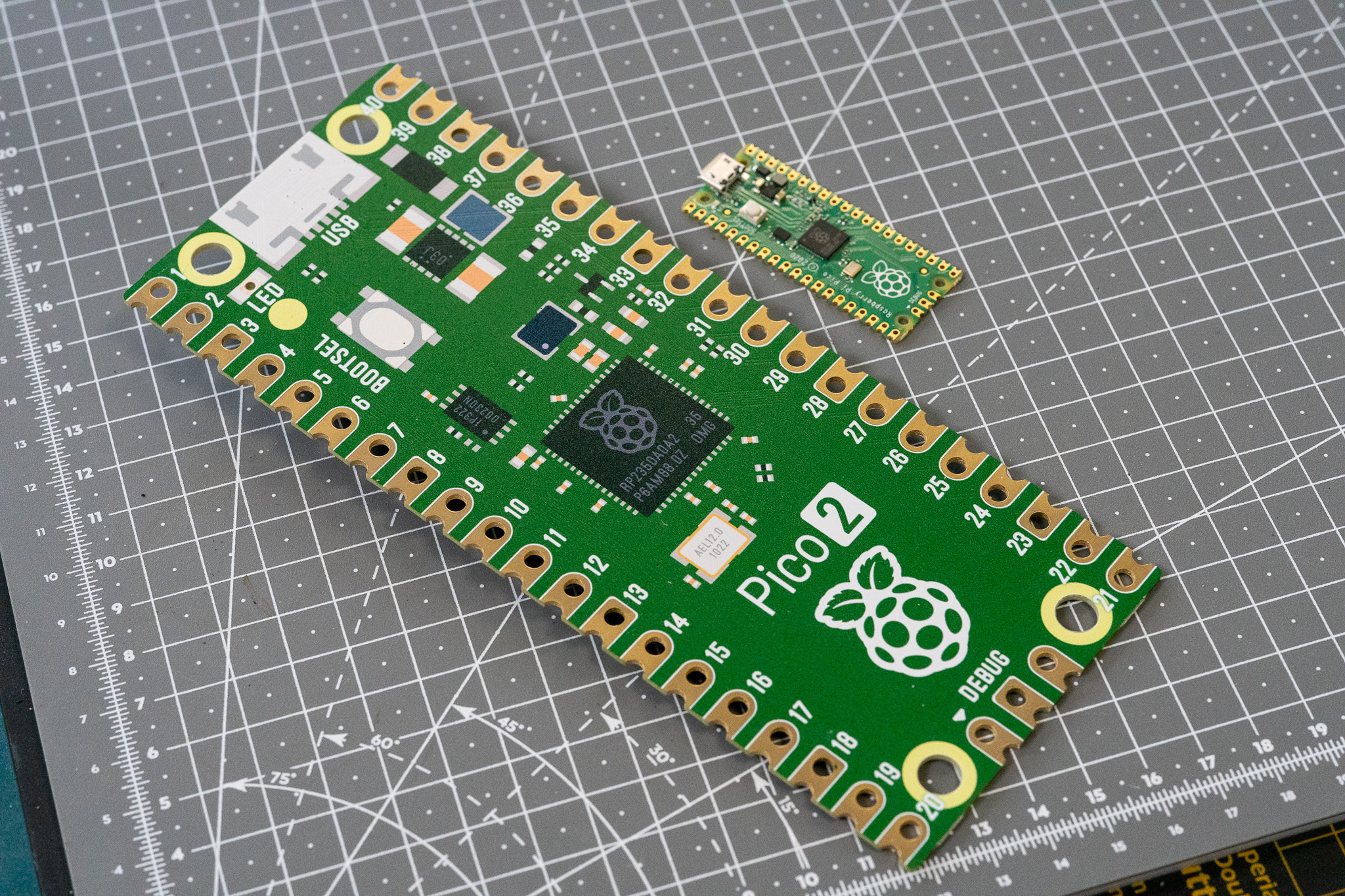
Pico Jumbo
Surely made from Pym particles (Ant Man), the largest Pico 2 product is the Pico Jumbo. It may look like an oversized comedy prop, but it is a real and fully functional Raspberry Pi Pico 2. The Pico Jumbo provides the same GPIO pinout, but instead ofsoldering your GPIOheader we use croc clips to make connections.
This is similar to the micro:bit, code:bug and Makey Makey style boards and it could prove useful for educators who want to demonstrate circuits to the class.Pico Jumbo will retail for $17.40 (£16)with an onboard Pico 2 and leg stands.A kitwith electronics and croc clips will retail for $31 (£28.50).
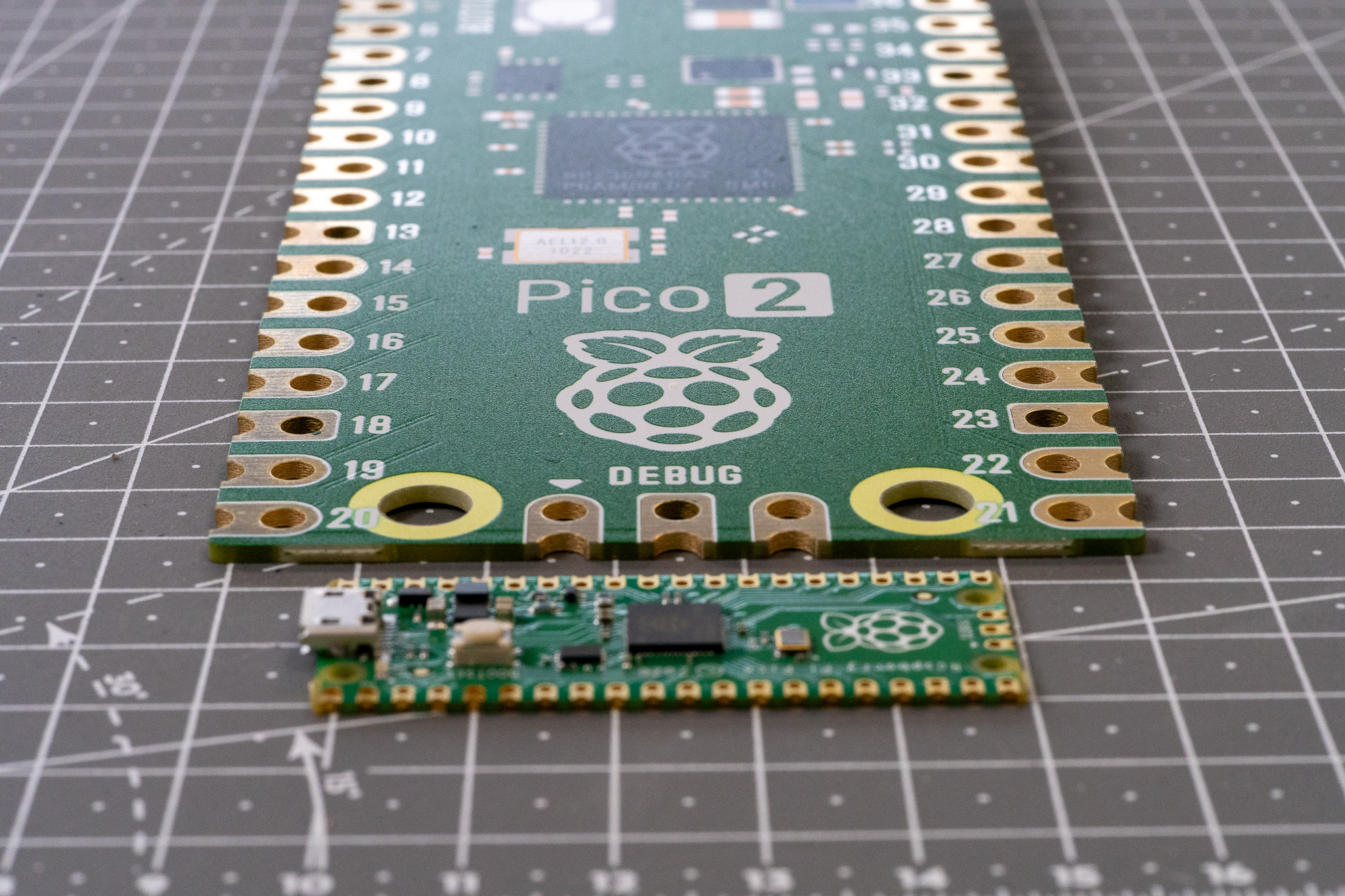
Pimoroni Explorer
I’ve long been a fan of Pimoroni’s Explorer range of boards. I used them to teach robotics and kinetic projects at the Raspberry Pi Foundation’s Picademy training course.The originalPico Explorer, reviewed back in 2021, was a good effort and packed in the features, but the laterPimoroni Inventor 2040Wquickly surpassed it.The Pimoroni Explorer is powered by the RP2350, has 16MB of flash storage (four times that of the Pico 2), a 2.8 inch screen, speaker, two Qw/ST (StemmaQT) connectors. There are also outputs for servos, GPIO and ADC, croc clip connections, six buttons and a battery connector. Power and data connectivity comes via a USB type C port.
The silkscreen print for this product alone is enough to make us gasp. Designed using a lanyard badge layout, the Pimoroni Explorer is part wearable, and part electronics playground and I can’t wait to test it out.Pimoroni Explorer is priced at$37 (£33.90) for the base unit, or $65 (£60) for astarter kitwith sensors and other electronic components.

Pimoroni Pico Plus 2
The Pimoroni Pico Plus 2 is what happens when a Raspberry Pi Pico 2 is taken to the max. With four times the storage capacity of a regular Pico 2 (16MB vs 4MB) and the maximum supported amount of PSRAM for the RP2350 (8MB). We also get a Qw/ST (StemmaQT) connector, SWD debug and Pimoroni’s new SP/CE (SPICE) connector which breaks out more connections to a port that is a little larger than Qw/St.
The extra pins provide SPI, UART and extra user configurable pins for your more eclectic add-ons. Power and data connectivity comes via a USB type C port.For any projects that need more RAM and storage, emulation for example, then Pico Plus 2 looks to be the board for you.Pimoroni Pico Plus 2is priced at $12.23 (£12).
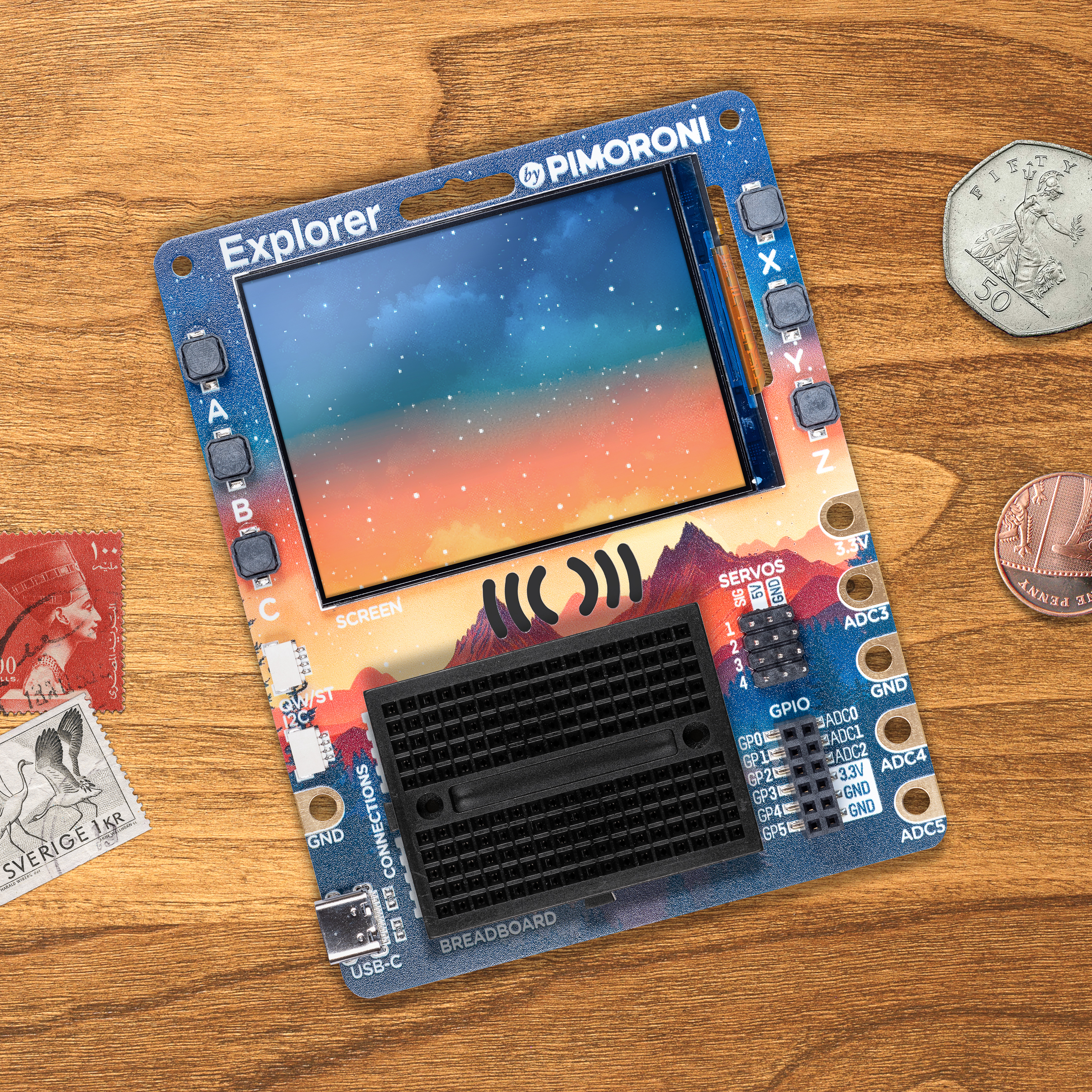
Plasma2350
Pimoroni’s originalPlasma 2040Wwas a super-easy and super-bright way to make large scale LED projects that used WS2812B (NeoPixels) and APA102 (DotStar) LEDs. The new Plasma2350 shares the same feature set as the Plasma 2040W, but uses the “stick of gum” design aesthetic found in thePlasma Stick 2040 W. Plasma2350 also comes with Qw/ST, SP/CE port, screw terminal for secure LED connections and 4MB of flash storage. Power and data connectivity comes via a USB type C port. Plasma2350 comes as abare unit for $12.23 (£12)or as part of a$37.50 (£34.50) starter kitwith 10M of RGB LEDs.
Tiny2350
Just like its predecessor, Tiny2040, Tiny2350 breaks out just enough GPIO pins in order to be useful. It has just enough pins to provide 12 general purpose pins, of which four can be used as analog inputs, I2C, SPI, UART and there is now a Qw/ST port and 4MB of flash storage.Tiny2350 is priced at $9 (£7.80).
PGA2350
PGA2040 brought every single GPIO pin into a 21mm x 21mm board, designed for use in your own custom PCB creations. The PGA2350 continues this tradition and sees the same size, shape and pinout being used with the new RP2350 chip. We get 16MB of flash storage, and the full 8MB of PSRAM, making this another way to max out the RP2350 but this time you may design your own projects around it.PGA2350 is priced at $9.75 (£9).
Cytron Technologies
Motion 2350 Pro
Malaysia based Cytron Technologies have released the Motion 2350 Pro, an advanced robotics controller aimed at beginners, and powered by the new RP2350.
Motion 2350 Pro comes in Cytron’s usual PCB color of choice, purple and the 95.2 x 57.2mm PCB packs plenty of features.
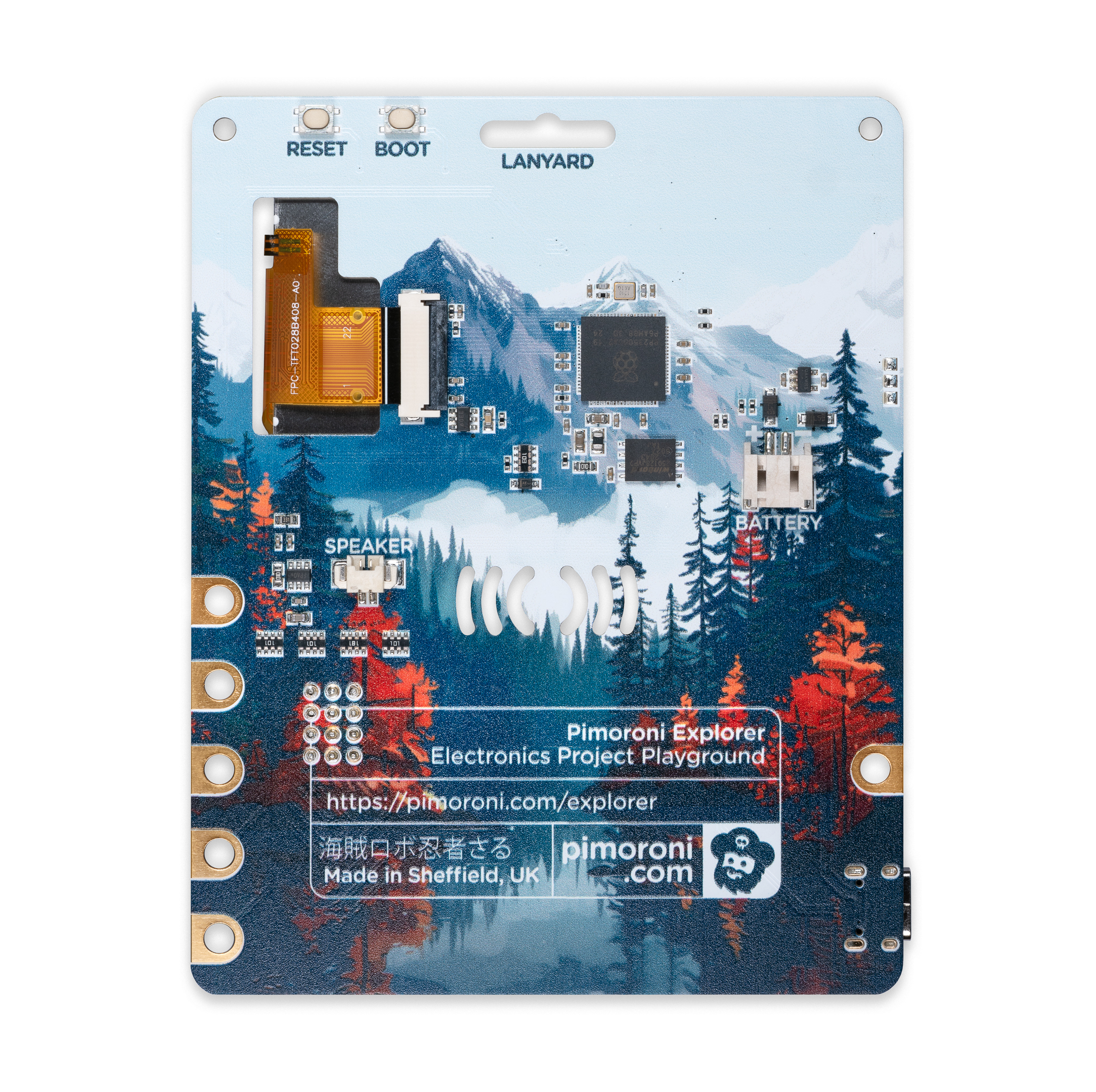
The board promises more power, not just computationally via the RP2350, but more powerful motors can be used. DC motors between 3.6 and 16V can be used with the motor terminals, with power being provided via the external input voltage port. If wheeled robots aren’t your thing, then the eight servo ports offer enough servo connections to make a four-limbed crawling robot, guaranteed to scare your family.
The USB host port is an intriguing concept. We first saw a USB port on Cytron’s EduPico board, but that was a USB connected to a relay. This host port offers the potential to connect a USB dongle for remote control of your robot via a low-cost gamepad. Remember, the RP2350 doesn’t have Wi-Fi or Bluetooth, so this feature on the Motion 2350 Pro could become very useful.

Programming Motion 2350 Pro is via CircuitPython (preloaded) or your choice of MicroPython, C orArduino(coming soon). The USB type C port can be used to programme the board, and for basic 5V power input. For the motors it is advised to supply an external voltage via the input voltage terminals.
Adafruit
Metro RP2350 and Feather RP2350
Adafruit is working on two RP2350 based boards. The first is Metro RP2350 which uses the Arduino Uno form factor to provide compatibility with Arduino shields. The other board is Feather RP2350, which sees the RP2350 being used in Adafruit’s popular Feather pinout and form factor.
XIAO RP2350
With just 19 GPIO pins, packed into the familiar XIAO form factor, the XIAO RP2350 wants to be the smallest RP2350 dev board. The XIAO and Adafruit QTPy form factors are identical, and that means we can use QTPy and XIAO accessories to add extra features to our projects.
Solder Party
Solder Party are best known for itsRP2040 Stampand carrier board range. Based in Sweden, Solder Party creates artisanal electronics projects that are made to be embedded in projects. For its latest line-up we see three new products. Head over to theSolder Party storeto signup to the waitlist.
RP2350 Stamp
Packing the GPIO found in the RP2350A, along with 16MB of flash storage and 520KB of SRAM in a footprint of 1 inch square is no mean feat. Being pad compatible with the RP2040 means that the RP2350 can be dropped into a project to upgrade with minimal fuss and redesign. The price for this miniature marvel? $11.
RP2350 Stamp XL
Offering more GPIO pins (48 in total) and more space for a second QSPI flash / PSRAM chip, the RP2350 Stamp XL is larger than the RP2350 Stamp at 1 x 1.75 inches. But it is partially pad compatible with the RP2350 and RP2040 stamps. There are also footprints for SWD and UART JST connections. The larger board of the XL doesn’t mean a larger price tag, coming in at the same $11 as the RP2350 Stamp.
RP2xxx Stamp Carrier XL
Designed in a similar manner to the Arduino Mega / Due form factor, the Carrier boards provide a means of breaking out the RP2350 GPIO. Providing compatibility with Arduino shields (similar to Raspberry Pi HATs) and features such as micro-HDMI shaped interface, USB host, microSD and Qwiic (StemmaQT), the carriers offer a flexible means to prototype your projects. The carrier comes in at $7.50, but you will also need an RP2350 Stamp or XL to make the board work.
Les Pounder is an associate editor at Tom’s Hardware. He is a creative technologist and for seven years has created projects to educate and inspire minds both young and old. He has worked with the Raspberry Pi Foundation to write and deliver their teacher training program “Picademy”.
